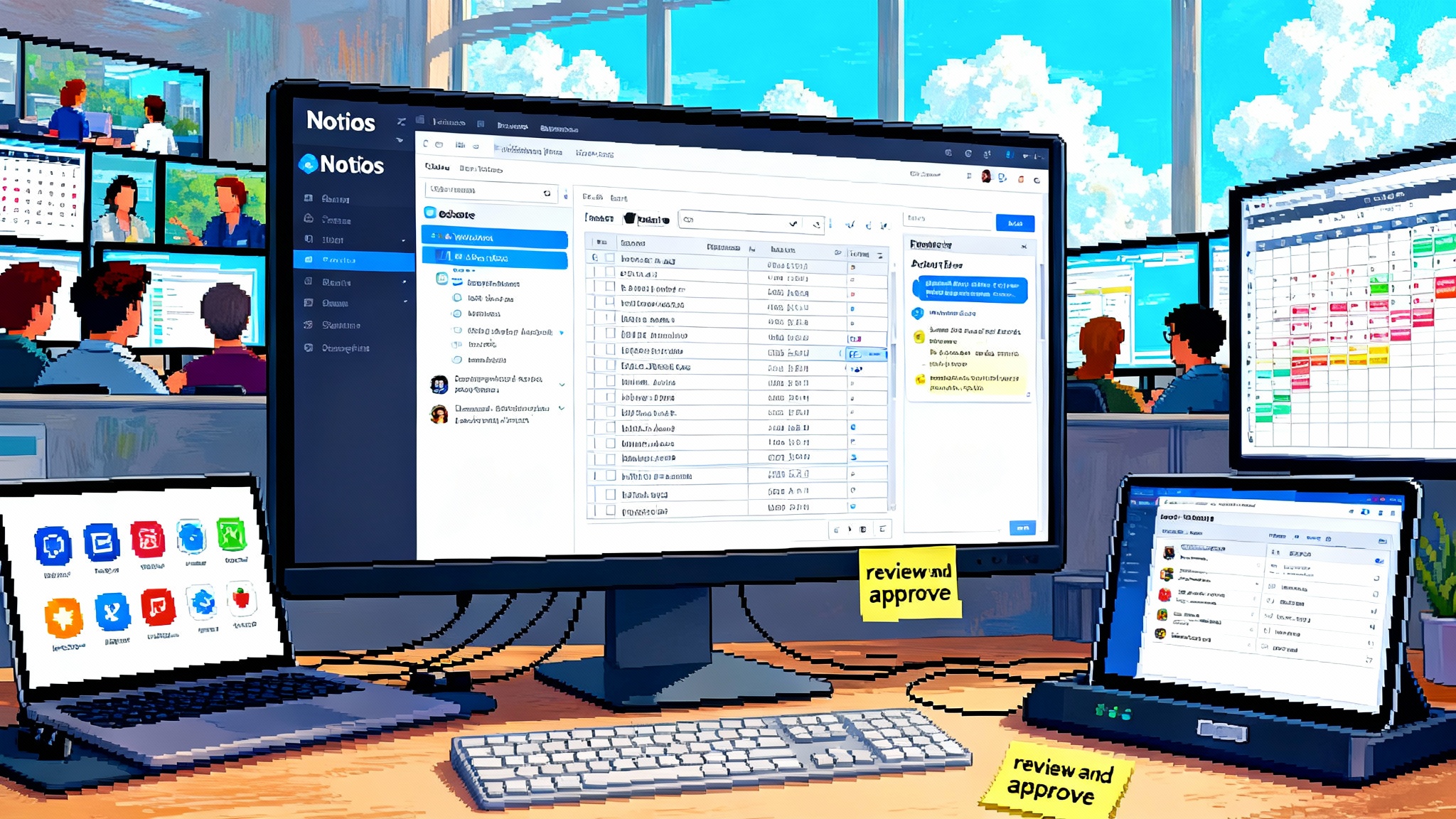Tinker launch makes post-training the next AI platform
Thinking Machines launched Tinker on October 1, 2025, betting that post-training beats pretraining scale. See why weight ownership matters, how to choose your stack, and use a 30 day plan to ship reliable specialists.

A quiet launch with loud implications
On October 1, 2025, Thinking Machines Lab introduced Tinker, a managed service and programming interface designed for post-training large language models. The company is betting that the next competitive frontier is not bigger base models but the engineering craft that turns them into dependable specialists. Tinker exposes low-level primitives such as forward and sample, provides a cookbook of post-training recipes, abstracts cluster operations, and crucially allows users to download their trained weights. That last feature shifts leverage toward builders who want control over their destiny. Read the official Tinker launch details.
If the last five years celebrated pretraining scale, the next five will reward post-training control. Teams will compete on how quickly they can shape model behavior with their own data, tools, and feedback loops, not on secret pretraining corpora.
The platform shift is post-training, not pretraining
Pretraining remains essential, but it is commoditizing as open families like Llama and Qwen keep closing the quality gap. For many applied teams, the differentiator is no longer access to exotic pretraining data. It is the post-training stack that produces domain fluency, correct tool use, calibrated risk, and predictable cost.
Think of a base model as a powerful, generic engine block. Post-training is the tuning shop. The same block can power a delivery truck, a rally car, or a forklift depending on how you tune it. Owners who run the tuning shop keep the bill of materials and the keys.
Three forces are making the shift inevitable:
- Open models are crossing the threshold of reasoning and tool use. With targeted supervised fine-tuning and reinforcement learning, they can outperform closed generalists on bounded tasks.
- Distributed training is getting easier to operate. Services like Tinker promise to hide orchestration without hiding algorithmic knobs, while open stacks such as VeRL and research pipelines like SkyRL are maturing for long-horizon, tool-augmented agents. See Berkeley’s SkyRL project overview.
- Weight ownership matters. Downloadable weights change procurement, compliance, and platform risk. You can move between clouds and serving stacks and negotiate from a position of strength.
What post-training actually includes
Post-training is not one trick. It is a system that binds several layers into a repeatable factory:
- Supervised fine-tuning to establish baseline behavior, format discipline, and task structure.
- Reinforcement learning to shape preferences, verifiable skills, and long-horizon policies.
- Retrieval and tools that anchor generations to current knowledge and reliable actions.
- Evals that mirror real work, not just academic puzzles.
- Safety governance that scales with adoption and diffusion.
When these parts cohere, teams trade leaderboard theatrics for durable performance in production.
A pragmatic playbook for real products
You do not need a moonshot. You need a system that tightens the loop from data to decisions.
1. Curate data like an editor, not a hoarder
- Start with operational traces. Pull real chat logs, tool call transcripts, and task outcomes from production. Normalize them into episodes that include state, goal, actions, and result.
- Label for behavior and outcome. Go beyond correct or incorrect. Capture tool choice appropriateness, latency, safety flags, and why a step was taken.
- Use synthetic data where it multiplies scarce signals. If you lack examples for a failure mode, generate hard negatives by adversarial prompting and have humans judge or correct them.
- Maintain provenance. Each example should carry lineage tags for collection date, environment, policy, and annotator pool. Provenance enables audits, rollbacks, and fast root cause analysis.
2. Make retrieval your first loop
Before reinforcement learning, get retrieval right. It reduces variance and shrinks the policy search space.
- Index the right sources. Product manuals, runbooks, code repositories, policy documents, tickets, and canonical answers. Prefer smaller, high-trust indices over everything buckets.
- Instrument retrieval. Log what was retrieved, what was read, and whether it changed the outcome. Use these signals to prune noise and promote authority.
- Treat tools as documents. Many agent failures stem from tool misuse. Include tool affordances, command examples, and error interpretations in your knowledge base. Teach the model to ask before it acts.
3. Build evals your pager will respect
Do not chase scoreboard glamour. Evaluate what users will actually ask the agent to do.
- Construct scenario suites. For support, craft multi-turn cases with policy exceptions, tool outages, and escalation points. For coding, include repo bootstraps, flaky tests, and ambiguous specs.
- Use user-centered metrics. Solve rate, first pass acceptance, time to resolution, and intervention rate beat generic accuracy when you are shipping.
- Keep a standing red team. Maintain adversarial tests for prompt injection, data exfiltration, self-modification attempts, and risky tool combinations. Tie these to hard fail gates before promotion.
- Run offline and shadow live. Validate with offline replays, then shadow production traffic with no external effect. Only then consider a small canary with real actions.
4. Model costs before you train
Budget around tokens, steps, and acceptance.
- Tokens: estimate tokens per episode end to end, not just context. Include retrieval passages, tool I O, and planning tokens if you use chain of thought or scratchpads.
- Steps: tie supervised epochs and reinforcement steps to diminishing returns on your evals. Plot improvement per step and set a stop rule before you spend.
- Acceptance: the biggest driver is how much post-training lifts user acceptance so you can cut retries. Fewer retries shrink serving cost and user frustration.
A simple spreadsheet can capture this. Use columns for episode type, frequency, tokens per step, expected lift from supervised fine-tuning and reinforcement learning, and the downstream savings in human review. Your training plan becomes a financial model, not a wish.
Build vs buy: Tinker, open stacks, or DIY
The right choice is less about ideology and more about operations, control, and total cost.
When Tinker fits
- You want speed to a working specialist with full weight control. Tinker exposes low-level primitives, provides a managed cluster, and lets you download weights afterward.
- You plan to mix supervised fine-tuning and custom reward shaping. Start with supervised examples to stabilize behavior, then add verifiable rewards for math or code and preference signals for softer judgments.
- Your strengths are product and data, not distributed systems. Offloading orchestration and failure recovery pays when your edge is task design and governance.
When VeRL or SkyRL fit
- You need maximum algorithmic flexibility on your own hardware. Open stacks let you compose rollouts, reward models, and training backends without a vendor boundary.
- You expect long-horizon, tool-using agents. The Berkeley team has demonstrated progress on multi-turn, real-environment tasks with the SkyRL project overview.
- You have the operational bench for clusters. Running these frameworks well still means queueing design, checkpoint hygiene, and rollout farms.
When to go fully DIY
- You are packaging post-training as your product. If you sell alignment or agent training, you must own the full stack.
- You operate under unusual constraints. Examples include on-premises training with regulated data where network egress is forbidden or tiny models that must meet strict edge latency budgets.
- You demand the lowest unit cost over time. The ceiling on savings comes from removing every layer between you and the hardware.
A pragmatic pattern is phased choice. Start on a service like Tinker to validate data and rewards, then graduate parts of the pipeline to an open stack for cost or control once your recipes stabilize. If you can take your weights with you, migration becomes a plan rather than a rewrite.
Owning weights changes product finance
An agent carrying your weights is a capital asset, not just a recurring expense. Ownership delivers practical advantages:
- Procurement leverage. You can serve on your clusters or a commodity provider and negotiate price without losing your model.
- Privacy posture. You can harden training and serving within your compliance perimeter.
- Roadmap freedom. You can change decoding strategies, integrate speculative decoding or attention optimizations, and adopt new serving engines on your schedule.
This reframes internal pitches. You are not buying tokens. You are building an improving capability that sits on your balance sheet and compounds with use.
For an example of how enterprises are centralizing oversight as agents proliferate, see how agent control towers arrive to coordinate policies, observability, and rollouts across teams. Treat your post-training factory as the upstream of that control plane.
Governance that scales with diffusion
As post-training gets easier, recipes will spread. Governance keeps the flywheel honest.
- Pre-deployment gates. Require every new checkpoint to clear scenario evals and a red-team suite. Promote only when both pass with agreed margins.
- Training-time filters. Enforce privacy scrubs on logs, deduplicate sensitive content, and mark examples that touched regulated data. Keep a quarantine and an appeals process for contentious labels.
- Runtime controls. Use a policy engine that can intercept dangerous actions. For tool-using agents, wire kill switches into the tools. The agent should not be able to disable the brake.
- Lineage everywhere. Record data versions, code hashes, reward definitions, and eval results for every run. Every production event should map to a model fingerprint and dataset manifest.
- External transparency. Publish model cards and change logs when you update customer-facing behavior. Users forgive honest changes with crisp reasoning. They do not forgive silent shifts.
Security is a first-class requirement once agents touch real systems. The emergence of agent-native security for enterprise AI underscores that guardrails must live in both the model and the tools it can control.
The next cohort of vertical agent startups
As orchestration fades into the background, a cohort of focused companies will win on post-training craft.
- Legal and compliance agents that pass jurisdictional audits because their evals mirror real filings and their logs are reviewable by regulators.
- Field service agents that fuse device telemetry with maintenance manuals, then learn local heuristics from technician feedback.
- Financial operations agents that reconcile at quarter close, where the reward is not an abstract score but fewer escalations and zero privacy incidents.
These companies will not look like research labs. They will look like disciplined operations shops with a relentless loop of data curation, retrieval discipline, safe reinforcement, and shipping cadence. Their dashboards will track solve rate, acceptance, and time to resolution, not just loss curves.
For a sense of how analytics teams are already shifting from dashboards to decisions, compare patterns described in Proactive BI agents in production. The same playbook applies: focus on outcomes that users and executives actually value.
Monday morning: a 30 day plan
If you are a startup founder or product leader, here is a concrete plan to make the platform shift real.
- Days 1 to 5: Define the task and its guardrails. Write down what a successful episode looks like, how you will measure it, and what actions are off limits.
- Days 1 to 10: Build your eval suite and red-team set. Use historical tickets or code diffs to simulate reality and automate scoring.
- Days 3 to 15: Stand up retrieval. Pick a high-trust subset of documents and instrument it for quality signals.
- Days 5 to 20: Assemble your first supervised dataset from live traces. Label outcomes and reasons, not just answers.
- Days 10 to 25: Choose your path. If you need speed and weight ownership, launch a Tinker pilot with a small Llama or Qwen base. If you need maximal control and have infra, stand up an open stack and reproduce the supervised run.
- Days 15 to 30: Add a verifiable reward loop for a narrow skill, such as unit-tested code or deterministic math. Compare acceptance, retries, and latency before and after.
- Day 30: Decide to scale or pivot. If evals improved and guardrails held, expand scope. If not, debug with logs and iterate on rewards or retrieval before adding complexity.
This is boring, repeatable work. That is the point. Post-training rewards teams that touch reality more than teams that post graphs.
Pitfalls to avoid
- Too much synthetic data too early. Without real failure modes, you will overfit to sterile patterns.
- Reinforcement learning before retrieval. RL will chase ghosts if your knowledge substrate is noisy.
- Ignoring inference cost in design. Plan for tokens per episode across planning, tools, and retrieval, not just context size.
- Letting evals drift. Keep scenario suites current with actual incidents and update them as your product changes.
- Overindexing on one metric. Acceptance, solve rate, latency, and intervention rate are a bundle. Watch them together.
Conclusion: The tuning era belongs to builders
Tinker’s debut is a milestone because it treats post-training as a first-class product, not a research demo. It makes a straightforward promise. Bring your data, bring your rewards, keep your weights, and ship specialists that solve real problems. Open stacks like VeRL and research pipelines like SkyRL point in the same direction from different angles. The new platform is not a single giant model. It is a disciplined factory for turning good base models into trusted agents. Teams that master that factory will set the pace in the months ahead.








